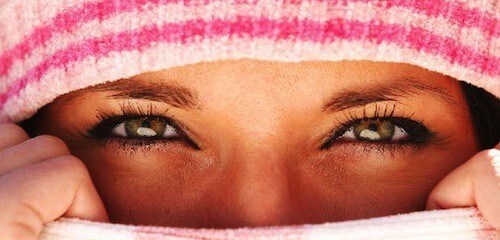
Although medical knowledge about ocular rosacea continues to increase, many rosacea patients may fail to recognize their eye symptoms may be related to this disorder and needlessly suffer, especially during harsh weather, according to Dr. Guy Webster, clinical professor of dermatology at Thomas Jefferson Medical School.
“In daily clinical practice, we have found that patients commonly deny any eye-related issues,” he said. Patients also often cite other factors such as cigarette smoke, contact lens irritation or allergies as the source of their discomfort, he noted. “Many patients have grown so accustomed to their eye symptoms that they are no longer cognizant of their condition — or may simply be unaware that they even have a problem.”
Signs and symptoms of ocular rosacea may include a watery or bloodshot appearance, foreign body sensation, burning or stinging, dryness, itching, light sensitivity and blurred vision. "Dry eye," blepharitis or styes are all strong indications of ocular rosacea.
A dry sensation may not mean the eye actually produces too few tears, Dr. Webster said, but that there is a lack of meibum — the outer layer on the tear film – which may be making the tears evaporate more quickly. He also noted that, while ocular rosacea is often equally intense throughout the year, severe weather such as the extreme cold and blustery winds that have hit much of the United States this winter can cause a worsening of its symptoms.
“Most important, rosacea sufferers with irritated eyes should see a physician to determine whether they have ocular rosacea and receive appropriate treatment,” he said. In addition to medical therapy, rosacea sufferers with eye symptoms can take action with personal care to help ease their discomfort.
Tips include blocking the wind with sunglasses and shielding the face with a wide-brimmed hat or umbrella. Artificial tears, available at most drugstores, may help to moisturize the surface of the eye. Daily eyelash shampooing can minimize blockage that may lead to dry eye or styes. Keep eyelashes clean by placing a drop of baby shampoo on a wet washcloth and carefully rubbing onto a closed eyelid to create a lather, then rinsing with lukewarm water.
“Of course, if eye symptoms persist, see an ophthalmologist,” he said.
Rosacea also appears to occur frequently along with other skin disorders such as seborrheic dermatitis or eczema, and it is important to treat both, Dr. Webster noted.
“If you don’t take care of the second disease, the rosacea ends up being very resistant,” he said. “It is as though the other disease itself is a trigger for rosacea."